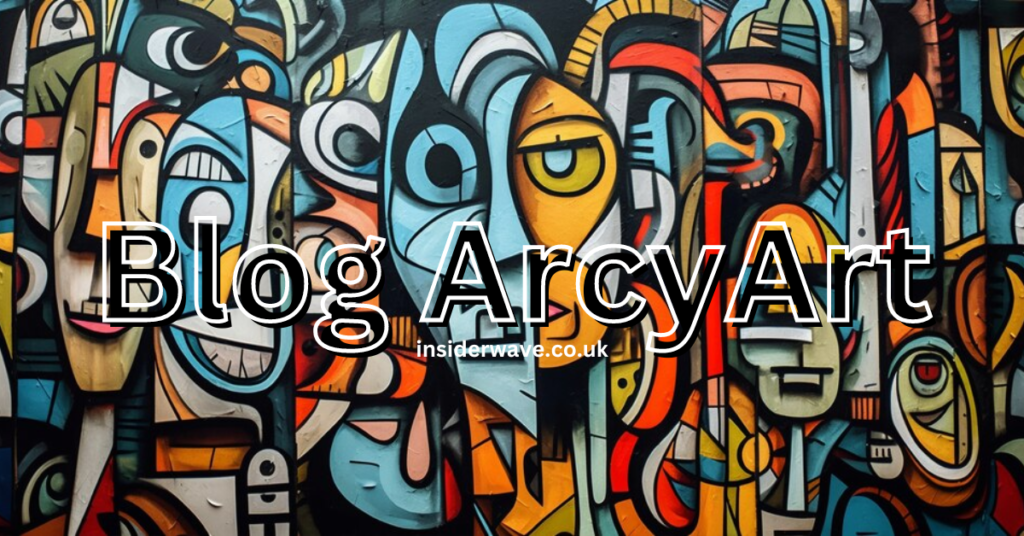
ArcyArt, Worldwide, the artwork is ever-evolving, pushed via social, political, and cultural changes that form how artists treat themselves. arcyart blog, Modern artwork movements, especially, have challenged traditional views, embraced innovation, and furnished glowing interpretations of the location around us. ArcyArt, an incredible platform for painting lovers, artists, and creditors, explores these movements thoroughly, helping us recognize their origins, impact, and future trajectories.
This article will examine contemporary artwork actions, their defining trends, and their relevance to today’s worldwide painting scene. We may even discover how ArcyArt showcases those actions, fostering a deeper appreciation for contemporary and current paintings.
Introduction to Modern Art Movements
Modern artwork refers to works from the late 19th century to the mid-twentieth century, encompassing several styles that broke a long way from classical traditions. Unlike earlier paintings’ place of work artwork, which emphasized realism and technical perfection, present-day artwork embraced precis thoughts, emotional expression, and experimentation. #adventuretwo.net blog website, Movements collectively with Impressionism, Cubism, Surrealism, and Abstract Expressionism challenged the traditional limitations of artwork and furnished new methods of seeing the arena.
The Shift from Realism
The transition from realism to abstraction marked a critical turning point in the development of modern artwork. Artists sought to move away from replicating the bodily international and alternatively explored deeper, frequently subjective, interpretations of truth.
Breaking Artistic Conventions
Modern artwork actions are known for their rebellious spirit, which questions established norms and explores new strategies and materials. This era is characterized by a preference for innovation and a rejection of the instructional artwork requirements of the time.
ArcyArt’s Role in Showcasing Modern Art
ArcyArt offers artists and artwork enthusiasts a platform to interact with cutting-edge artwork moves. It provides galleries, articles, and insights into the evolving dispositions that outline current-day creativity.
Impressionism: The Birth of Modern Art
One of the earliest modern-day paintings, Impressionism, originated in France in the late nineteenth century. Artists like Claude Monet, Edgar Degas, and Pierre-Auguste Renoir sought to capture fleeting moments and the outcomes of slight, regular painting out of doors (en plein air).
Characteristics of Impressionism
Impressionist paintings are characterized by unfastened brushwork, colorful colorations, and an emphasis on light and environment instead of specific facts.
The Rejection of Traditional Techniques
Impressionist artists rejected the formal suggestions of instructional painting, deciding to depict everyday scenes in an extra informal and spontaneous fashion.
Impressionism on ArcyArt
ArcyArt features galleries and articles devoted to the Impressionist movement, permitting visitors to learn about its legacy and characteristic impact on subsequent artwork styles.
Cubism: A Radical Reimagination of Space
Spearheaded by Pablo Picasso and Georges Braque in the mid-twentieth century, Cubism is considered one of the most persuasive developments of contemporary craftsmanship. #adventuretwo.net blog websites, Cubists deconstructed devices into geometric shapes, imparting multiple viewpoints inside a single photograph.
The Fragmentation of Form
Cubism broke far from the traditional attitude, providing fragmented and abstract views of gadgets. This shift allowed artists to find out the complexity of belief.
Analytical and Synthetic Cubism
Cubism is divided into tiers: Analytical Cubism, which focuses on deconstructing office work, and Synthetic Cubism, which integrates college and mixed media to create more simplified compositions.
Cubism within the ArcyArt Collection
ArcyArt’s series consists of works stimulated by Cubism, providing insights into how contemporary artists continue to draw notions from this modern movement.
Surrealism: The Dream World on Canvas
- See Also https://guestpublisher.com/casteo/
Surrealism, which emerged in the Twenties, sought to depict the subconscious mind, desires, and irrational mind. Inspired by way of the usage of the manner of Sigmund Freud’s psychoanalytic theories, Surrealist artists, together with Salvador Dalí, René Magritte, and Max Ernst, used regular, dreamlike imagery to discover the human psyche.
Exploring the Unconscious
Surrealist artists believed that the unconscious mind was the key to real creativity, and they used strategies like automatism and juxtaposition to release this component.
Surrealist Techniques and Themes
Common problems in Surrealist paintings include bizarre combinations of gadgets, distorted paperwork, and dreamlike landscapes, all of which create a sense of unreality.
Surrealism’s Influence on Contemporary Art
ArcyArt offers a platform for artists who strive to discover Surrealist problems, showing how the movement’s legacy endures in recent times’s innovative expressions.
Abstract Expressionism: Emojation and Gesture
Conceptual Expressionism, which acquired noticeable quality in Second Great War America, has become portrayed using unconstrained, gestural brushstrokes and accentuation to convey feeling instead of portraying conspicuous points. Specialists like Jackson Pollock, Imprint Rothko, and Willem de Kooning have become notorious figures in this movement.
The Action of Painting
Abstract Expressionists believed in the act of portraying as an expressive technique, frequently using paint in dynamic, lively strategies that conveyed raw emotion.
Color Field Painting
A subset of Abstract Expressionism, Color Field portrayal involves massive swaths of color applied to the canvas to evoke a meditative, emotional reaction. Rothko’s artwork is an excellent example of this technique.
Contemporary Abstract Art on ArcyArt
ArcyArt showcases modern-day precis artists who preserve the legacy of Abstract Expressionism, mixing emotional intensity with innovative techniques.
Pop Art: The Art of Popular Culture

In the Nineteen Fifties and Sixties, Pop Art emerged as a reaction to consumerism and mass media subculture. Artists like Andy Warhol and Roy Lichtenstein used imagery from advertising and marketing, comedian books, and everyday devices to mission traditional notions of extraordinary artwork.
The Intersection of Art and Consumerism
Pop Art blurred the traces of the immoderate and espresso way of life, using business pics to critique the growing purchaser lifestyle of the put-up-war era.
Iconic Works and Symbols
Warhol’s Campbell’s Soup Cans and Lichtenstein’s comic strip-fashion artwork are some of the most recognizable works of Pop Art, symbolizing the movement’s embody of famous imagery.
Pop Art in Today’s Culture
On the ArcyArt website, visitors can discover how Pop Art maintains and persuades contemporary artists who interact with consumerism, era, and celebrity tradition issues.
Minimalism: Less is More
Minimalism, which emerged in the late Fifties and 1960s, focused on simplicity and the use of crucial factors like color, shape, and form. Artists like Donald Judd, Frank Stella, and Agnes Martin stripped down their artwork to the necessities, aiming for clarity and precision.
Simplicity and Precision
Minimalist artwork is characterized by smooth strains, geometric shapes, and the use of visible elements. The emphasis is on the artwork itself as a means of expressing the artist’s feelings.
The Influence of Industrial Materials
Many minimalist artists used commercial organization substances, such as steel, glass, and urban, focusing on the materiality of their artwork to avoid the need for complex narratives or symbolism.
The Minimalist Movement on ArcyArt
ArcyArt explores minimalist motion via curated well-known artist profiles, presenting site visitors with how minimalism’s simplicity keeps to persuasive structure, layout, and modern-day artwork.
Contemporary Art: A Convergence of Movements
As the cutting-edge generation is superior, the bounds among diverse art movements have become increasingly fluid, leading to the rise of current artwork. Contemporary paintings of patterns, mediums, and strategies frequently reflect the complexities of globalization, identity, and technology.
Blurring Boundaries
In modern paintings, variations between portrayal, sculpture, and digital media are regularly blurred. Artists use everything from conventional materials to contemporary technology to create works that challenge the viewer’s perception.
Themes of Identity and Social Justice
A big problem in modern art is the exploration of personal and collective identity. Many cutting-edge artists use their paintings to deal with social justice issues collectively, such as race, gender, and environmental issues, presenting a crucial pondered photo of the area we live in.
ArcyArt’s Engagement with Contemporary Art
ArcyArt is at the forefront of showcasing cutting-edge artists and their various expressions. The platform highlights modern-day artwork’s innovative and interdisciplinary nature, allowing website visitors to see contemporary developments and discussions in the global painting scene.
The Future of Art: ArcyArt’s Vision

As modern-day artwork moves preserved to shape the imaginative panorama, ArcyArt is devoted to helping the destiny of artwork. The platform allows developing artists to reveal their artwork, offers insights into new artwork moves, and fosters a network of painting enthusiasts, creditors, and creators.
Embracing New Media and Technology
With the rise of virtual artwork, NFTs, and immersive technology, the art world is suddenly evolving. ArcyArt remains early in those adjustments, supporting artists and audiences in interacting with the contemporary generation while preserving a connection to the core necessities of imaginative expression.
Supporting Emerging Artists
One of ArcyArt’s missions is to discover and sell developing artists who project traditional progressive barriers. By offering a platform for extraordinarily modern-day voices, ArcyArt guarantees that the destiny of paintings stays modern and several.
Fostering Global Artistic Connections
ArcyArt connects artists and art fans across the arena, growing an inclusive and dynamic network wherein drift-cultural communication and modern trade thrive. This worldwide method allows for a rich exchange of ideas and effects, shaping the destiny of modern art.
FAQ’S
What modern art movements are explored on ArcyArt?
ArcyArt covers a wide range of modern art movements, including Abstract Expressionism, Surrealism, and Minimalism.
How does ArcyArt help artists engage with modern art movements?
ArcyArt provides resources, articles, and insights that help artists understand and participate in contemporary art trends.
Can I submit my own work to ArcyArt for review?
Yes, ArcyArt accepts submissions from artists looking to showcase their work and gain exposure within the modern art community.
Conclusion: The Enduring Legacy of Modern Art Movements
Modern painting actions, from Impressionism to Contemporary Art, have left an indelible mark on the paintings internationally. These movements have now not exceptional regular progressive expression but have moreover contemplated the cultural, social, and political changes of their times. ArcyArt’s dedication to exploring and showcasing those movements gives an invaluable resource for expertise in the evolution of artwork.
By diving into the complexities of each movement, ArcyArt fosters a deeper appreciation for the numerous and ever-changing nature of artwork. Whether you’re an artist, collector, or simply an artwork enthusiast, the platform offers a wealth of records and ideas, ensuring that the legacy of modern-day art continues to steer future generations of artists and thinkers.
Through the assistance of each setup and growing artist, ArcyArt bridges the distance between the past and present, displaying that the spirit of innovation and creativity that describes current artwork movements remains alive nowadays. As we advance into a trendy generation of modern exploration, ArcyArt stands as a beacon of creative discovery, ensuring that the destiny of artwork could be as exciting and contemporary as its past.








One thought on “A Deep Dive into Modern Art Movements with ArcyArt”